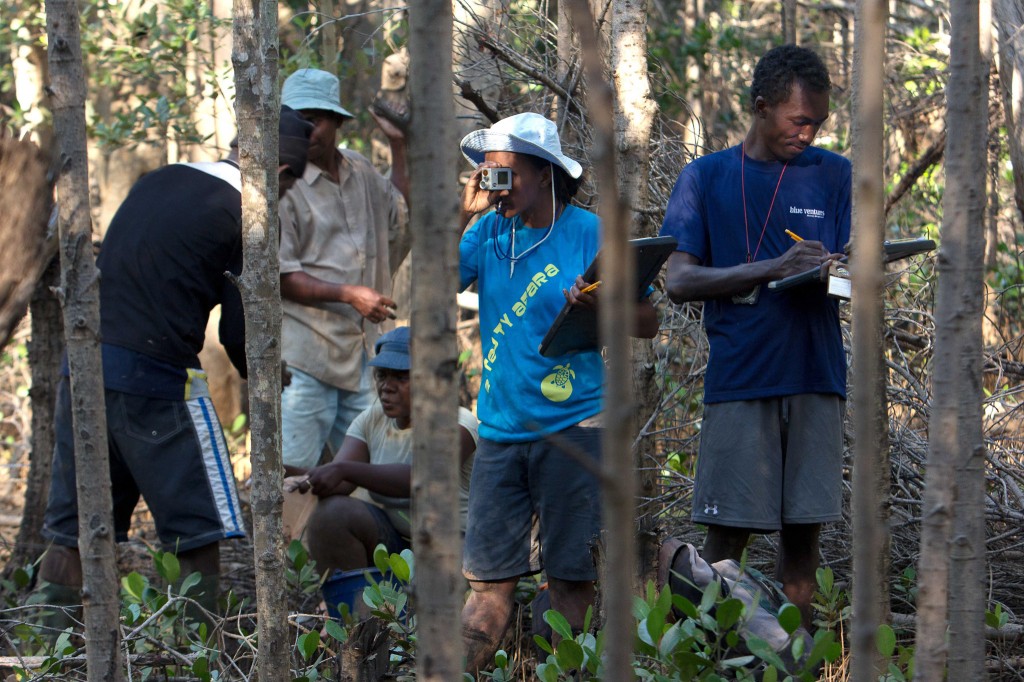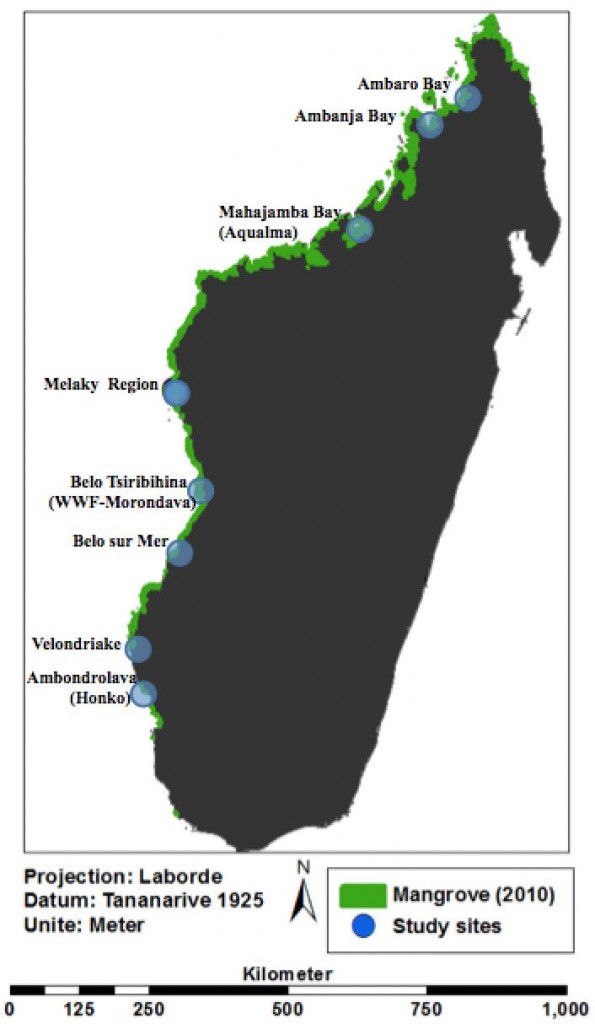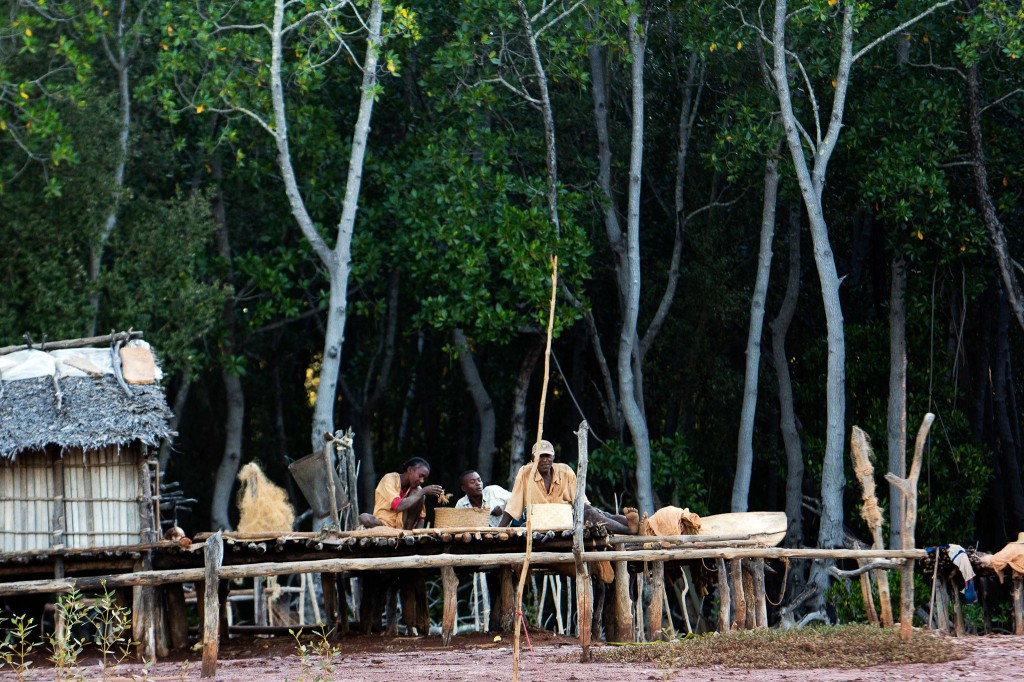By Trevor Jones, Geospatial Analyst and Manager, Vancouver
If someone had told me three years ago that I would come to work in Madagascar’s mangrove forests, I wouldn’t have believed them. Fast forward to July 2011 and I found myself commencing employment with Blue Ventures, starting with a field excursion in the remote Melaky region. I will never forget the first time I clambered out of a paddle pirogue and took that first step into the mangroves. My foot sank deep as crabs scattered in every direction, and so my work with the blue forests project began.
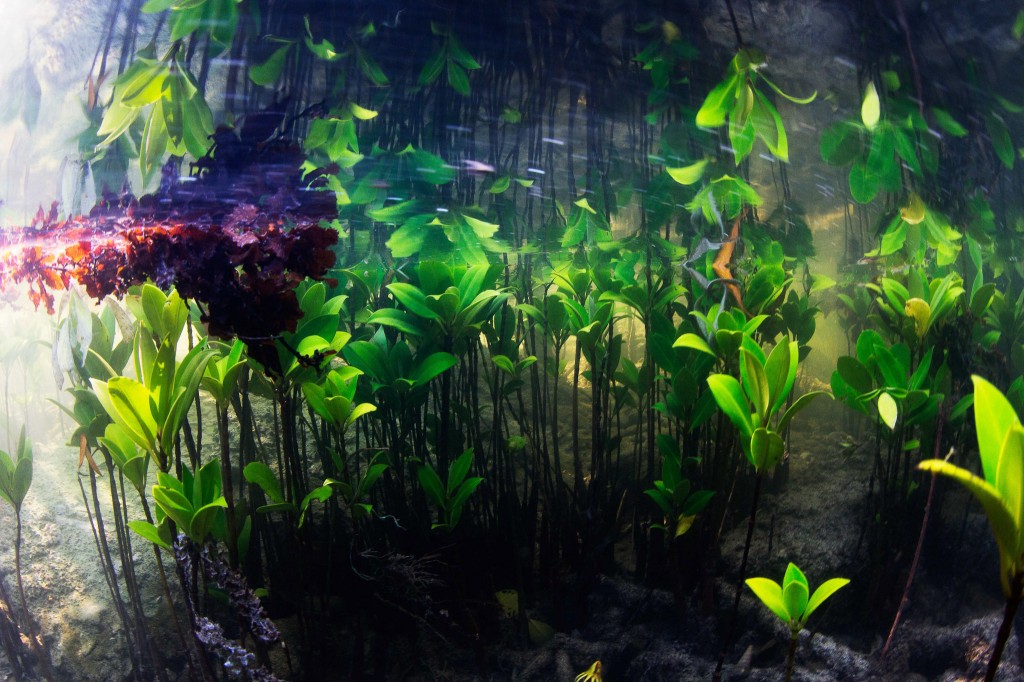
Young mangrove trees submerged in tidal waters
Since its inception in early 2011, Blue Ventures’ blue forests project has been working in and around mangrove ecosystems along Madagascar’s west of coast with the aim to make tangible contributions to poverty alleviation, climate change adaptation and biodiversity protection in vulnerable coastal communities. From its humble origins, an initial three person crew has blossomed into a team of 12 full-time Malagasy and expatriate scientists. Through a close partnership with the University of Antananarivo’s School of Forestry and Agronomy (ESSA Forêts), the University of Toliara’s Marine Institute (Institut Halieutique et des Sciences Marines) and a number of western universities, the project has fostered a strong tradition of student involvement, resulting in 11 graduate theses thus far, with six more in progress, and has also supported several independent undergraduate studies through the School for International Training (SIT) program. With work ongoing in Ambondrolava, the Velondriake locally managed marine area (LMMA), Belo sur Mer, Belo sur Tsiribihina, Maintirano, Mahajamba and Ambaro / Ambanja bay, numerous community members have provided critical guidance, exchanged ideas, received training and continue to be at the centre of the project.
Looking back over the past two years, much progress has been made. Our initial analysis of national-level mangrove dynamics has allowed us to identify locations exhibiting what are in many cases staggering rates of loss. Pinpointing these loss “hotspots” has allowed closer examination. Eight scientific expeditions involving surveying hundreds of plots have resulted in contemporary mangrove and surrounding landcover type maps for Madagascar’s largest mangrove ecosystems. For Ambaro and Ambanja bays, these maps are the first of their kind. Scientific expeditions have also yielded the first above- and below-ground carbon stock estimates for mangroves in Madagascar, and join a growing body of evidence showing that these forests as among the most carbon-dense in the tropics. Other highlights include studying the feasibility of mangrove-based Plan Vivos (following Gazi Bay, Kenya) in Ambondrolava, southwest Madagascar, piloting the world’s first application of an approved REDD+ methodology to mangroves in Ambanja and Ambaro bays, and ongoing contributions towards the world’s first REDD+ methodology designed for the conservation of intact wetlands.
Through numerous socio-economic excursions, participatory rural appraisals and mapping sessions, a tremendous amount has also been learned about the past and current relationships between local communities and mangrove resources, and their expectations for the future. It’s become clear that the Malagasy maintain a long-standing land-ethic towards these “blue” forests but that a variety of internal and external pressures, including shifting economic trends and population dynamics, often hinder this ethic. Working with communities to spread the word about the full host of critical services provided by healthy, intact mangrove ecosystems, and exploring ways to harness these services to fund mangrove conservation, restoration, reduced-impact use and alternative livelihoods remain primary objectives of the blue forests project.
While much progress has been made, the challenges and work ahead are nothing short of daunting. Although there is incredible potential for harnessing the financial value of ecosystem services, actually finalising value and having it result in tangible economic benefits for local communities requires continued feasibility assessments and pilot projects. Whether the ecosystem service is carbon sequestration, as financed through mechanisms such as REDD+, or crab yields as improved through temporary mangrove closures, our ever-expanding and diversifying team is working hand-in-hand with local communities to explore all possible options. Ongoing work continues to contribute to an unprecedented volume of field observations, scientific data and overall familiarisation with mangrove environments, which make major contributions not only towards determining which payment for ecosystem services (PES) projects are feasible, but also towards building consensual, community-driven initiatives that maximise the potential benefits drawn from conserved and restored mangrove habitats.
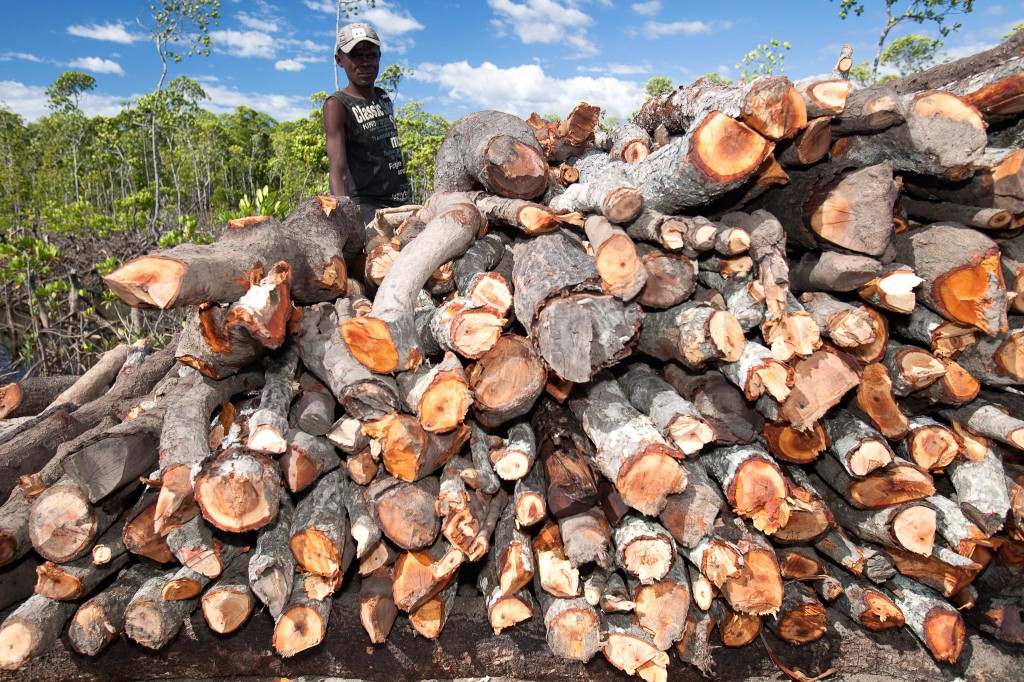
Stacked lumber from a mangrove in northwest Madagascar
To make a long story short: while the going’s been tough, and the road ahead is full of challenges, from its origins in early 2011 to our current power-house line-up, and in collaboration with our many partners, Blue Ventures’ blue forests project is well-positioned to steam ahead and gain ground in achieving our goals.
I write this blog on my final day in Madagascar, but reflect back on two years with pride and gratitude for the hard work of everyone involved, and consider myself incredibly lucky to have been a part of the journey thus far. While leaving Madagascar is bittersweet, it marks the next exciting chapter of our team’s diversification, as we open a branch in Canada! I’m relocating to Vancouver, where I will be working with the Faculty of Forestry at the University of British Columbia as Blue Ventures’ resident Geospatial Analyst. I look forward to remaining a part of this dynamic and committed team, as I pursue new opportunities and collaborations, all centred on the core goals of the blue forests project.
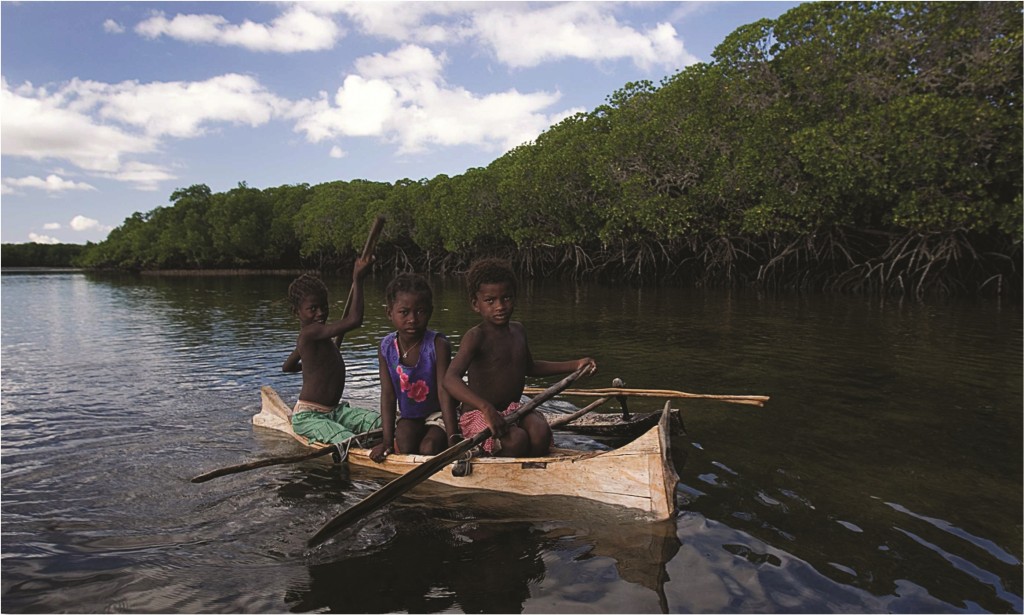
Working with local communities is critical for successful conservation
Our partners:
We of course have had and continue to develop many mutually beneficial partnerships. We are participants in the United Nations Environment Programme‘s (UNEP) Global Environmental Fund (GEF) Blue Forests Project, with project partners including GRID Arendal, Conservation International (Ecuador), World Wide Fund for Nature (WWF- Mozambique and Madagascar Western Indian Ocean offices), and the Indonesian Government. Through the UNEP/GEF Blue Forests Project, we have also participated in the Abu Dhabi Blue Carbon Demonstration Project, which was hosted by the Environment Agency Abu Dhabi and the Abu Dhabi Global Environmental Data Initiative (AGEDI). This demonstration project allowed further collaboration with Forest Trends, the World Conservation Monitoring Centre (UNEP-WCMC), and leading experts in mangroves and wetlands from Oregon State University, the Smithsonian Environmental Research Centre, and Environmental Science Associates (San Francisco). We are also pursuing collaboration with ecoPartners Carbon, Silvestrum, the Center for Forested Wetlands Research, WWF Mozambique and the US Forest Service to address the critical need for a REDD+ methodology designed specifically for the conservation of intact wetlands. In the Indian Ocean we’ve been working closely with the Kenya Marine and Fisheries Research Institute (KMFRI). In Madagascar, we’ve been fortunate to have strong and productive collaborations with both private-sector partners, Aqualma (Mahajamba bay), and partner NGOs like WWF (Morondava: supporting work in Belo Tsiribihina) and Honko Mangrove Conservation and Education (Ambondrolava). With the establishment of our Ambanja office in early 2013, we’ve been able to pursue a working relationship with the Centre National de Recherches Océanographiques. To date, this exciting project has been funded by the Western Indian Ocean Marine Science Association (WIOMSA), the MacArthur Foundation, the Darwin Initiative, the Waterloo Foundation and Planet Action.


